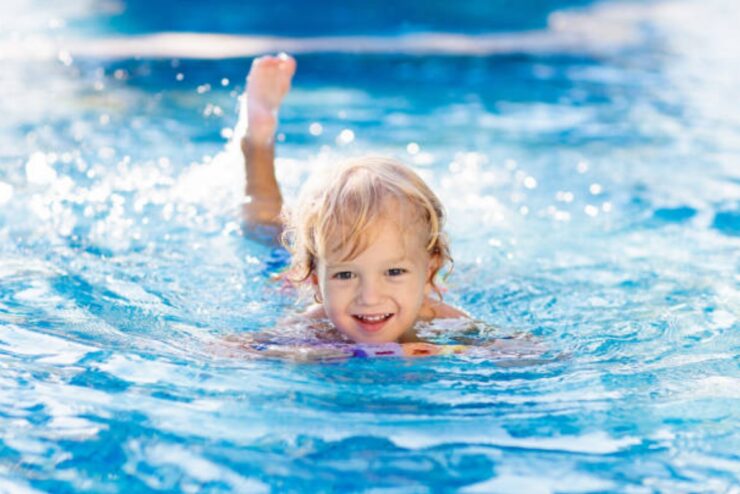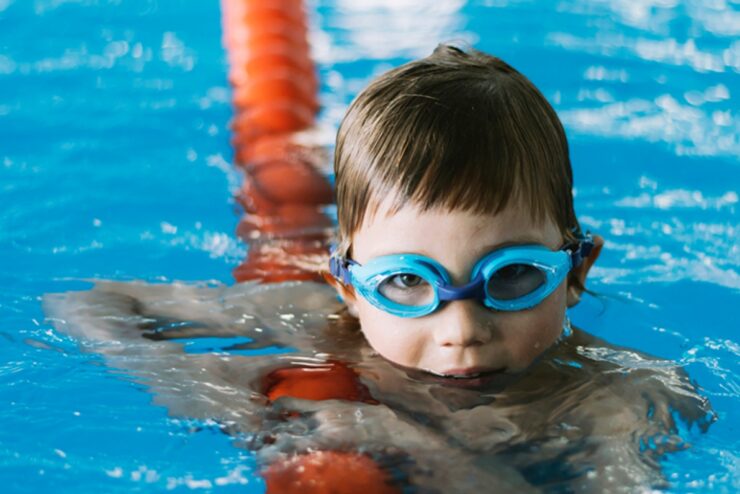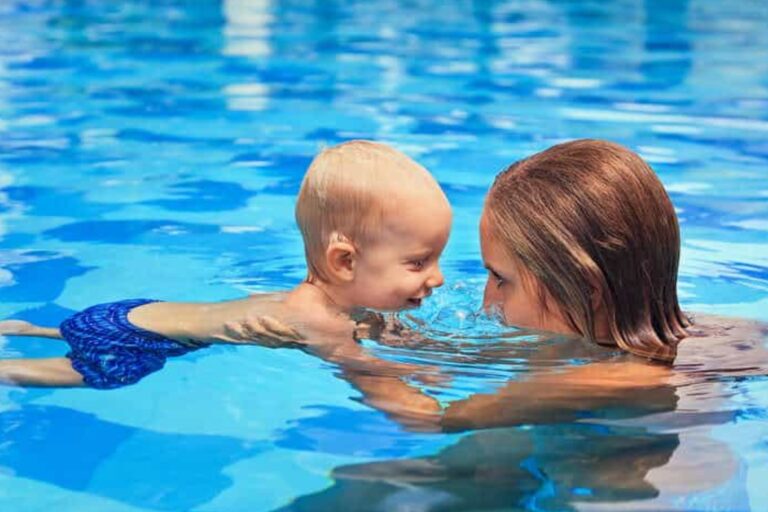Have you ever sat down with your children and explained to them the importance of learning how to swim? I’m sure you have. Why is it so important to learn this skill? Think about it in terms of your own life: How many times have you needed to swim across a fast-moving river when you’ve been in trouble and your boat has tipped over? Or, if that doesn’t apply, then think about how many times you’ve had a friend who was caught in a rip tide and needed help getting back (or maybe they didn’t, but do you want to take that chance?).
Introduction
Swimming is a great way to help protect young children from drowning and instill a love of water in them early on. The benefits of swim lessons include improved motor skills, social skills, physical strength as well as self-confidence, and aquatic safety. While it’s best to begin early, swim lessons for babies work at any age until approximately 4 years old. Classes are typically held in small groups with fewer than 6 kids, which makes it easier for the instructor to focus on teaching the parents how they can help their babies learn.

Swimming lessons for infants ages 6 months to 4 years old should be held with an instructor in a warm, indoor pool
The best time to start baby swimming lessons should be held with an instructor in a warm, indoor pool. The water temperature should be about 80 degrees Fahrenheit, not too hot and not too cold. The pool should be indoors and heated if possible, so you don’t have to worry about the weather keeping your child from learning how to swim. Your child will also learn better when it’s warmer outside than inside! Swimming pools with over eight feet of water (about 2 meters) are not safe for everyday play by infants or toddlers.
Why it is important to teach children to be safe in the water
Learning how to stay safe in the water, and learn how to float, dive, and swim will help them gain a sense of independence and self-confidence. It can also help boost their fitness levels. If you are thinking about starting baby swimming safety tips and lessons, there are many things that you need to think about first. This guide will take you through all the steps of choosing the right instructor, what they will teach your child and why it’s so important for them to learn these skills at an early age.

At what age is it best to teach children to swim
There is no single best age to start learning swimming safety tips and lessons. The decision should be based on the swimmer’s individual needs and abilities, as well as the parent’s preferences.
However, it is important to note that infants can be taught how to float and move in a pool at an early age. In fact, it is recommended that all babies are introduced to water before they turn one year old so they will develop comfort with the element before starting formal lessons at a later stage in their development.
What to do if your child doesn’t want to swim
If your child is resistant to learning to swim, here are some tips on how to make the experience fun:
- Make sure the pool is inviting. The color of the water, its temperature, and the amount of light are all important factors that can contribute to a positive or negative first impression
- Don’t force them into the water if they aren’t ready yet—try again later when they’re more comfortable with swimming as a concept and perhaps even have some experience under their belt already (we’ll go over this below!).
- Help them overcome fears by engaging in other activities that involve water exposure like riding on boats at theme parks or playing with water toys like squirt guns (just make sure you supervise safely!).

Parents and caregivers must remain in the water with their infants at all times during swim classes
You may have a lot of questions about your child’s swimming lessons, but one thing is certain: the safety of your baby is paramount. During classes, parents or caregivers must remain in the water with their infants at all times. This allows the instructor to teach you how to keep your child safe while they are learning to swim and also how to help them learn swimming safety tips and techniques.
While it’s important for babies and toddlers who are about to start swimming lessons (whether in a parent/tot class or at an older age), it can be difficult for parents who don’t swim well themselves! Don’t worry — we’ve got some tips on how you can prepare yourself so that everyone goes home safe and happy after class 🙂
It’s never too soon to start teaching your baby basic water safety skills
When it comes to teaching your baby how to swim, the earlier the better.
Swimming lessons are a great way for kids to learn how to be safe in and around water—and can also be fun! Whether you’re looking for beginner swim lessons or advanced training, there are plenty of options available that provide quality instruction for every age group. But when is the best time for your child to transition from learning basic water safety skills into swimming?
What is the best time to start baby swimming lessons? While there isn’t an exact age at which children should start learning how to swim, there are some important factors that come into play when determining whether or not it’s time for them to begin formalized lessons. It all depends on factors such as their physical and mental development (particularly strength and mental processing skills), any other developmental issues they might have, etc…

Conclusion
There is no better time than now to start your baby on the road of swimming. Classes are typically held in small groups with fewer than 6 kids, which makes it easier for the instructor to focus on teaching the parents how they can help their babies learn. The benefits of swim lessons include improved motor skills, social skills, and physical strength as well as self-confidence and aquatic safety.

